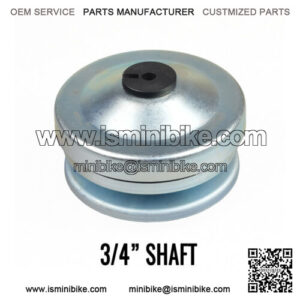Step 1: Access All Areas
In order to properly assess the state of your dirt bike’s clutch, you’ll need to have unrestricted access to it. This means removing any guards or covers that may be in the way. Also, follow the manufacturer’s instructions, as some components may be delicate or require special tools.
Step 2: Inspect the Clutch
Once you have determined that the clutch is the source of your problems, it’s time to inspect it. Start by removing the clutch cover. This will give you access to the clutch plates and springs.
Take a look at the condition of the plates. Are they scratched or warped? If so, they will need to be replaced.
Step 3: Outside In
Now take a look at the springs. Are they stretched out or bent? If so, they will need to be replaced as well.
Step 4: Pressure Is On
Now it’s time to test the pressure. Place your hand on the clutch cover and push down. You should feel some resistance, but it should not be too hard to push down. If it is hard to push down, the springs are probably too stiff and need to be replaced.
Step 5: Feel the Heat
Now put your hand on the clutch cover and give it a good squeeze. You should feel the heat emanating from the clutch. If you don’t, the clutch is not working properly and will need to be replaced.
Step 6: Lube & Thrust
Apply a light coat of lubricant to the clutch plates and thrust washers. This will help them slide smoothly against each other and reduce wear and tear.
Step 7: Broken Clutch
If the clutch is broken, it will need to be replaced. You will need to remove the clutch cover and the primary drive gear to do this. Then you can access the clutch plates and springs. Finally, replace any worn or damaged parts and reassemble the bike.
Step 8: Stacked Up
If the clutch is not broken but is not working properly, you may need to adjust the stack height. This can be done by adding or removing shims from the clutch stack. Be careful when doing this, as too much adjustment can damage the clutch plates.
Step 9: Washers
Dirt bike clutches use one or more washers to adjust how tightly the clutch plates are held together. If these washers are damaged, missing, or out of adjustment, it can cause the clutch to slip or chatter. You can check for this by visually inspecting the washers and verifying that they are all in place and not damaged.
Step 10: Cover-Up
Now, it’s time to cover up the bike. Start by putting the kickstand down and putting the bike on its side stand. This will help keep the bike stable while you’re working on it. Then, put a tarp or cover over the bike to protect it from dust and debris. Ensure that the cover is secured so that it doesn’t blow away in the wind.
Now that the bike is covered, you can start working on the clutch. Be careful not to touch any of the moving parts while working on it, as this could cause serious injury. If you’re not sure how to work on the clutch, you may want to take it to a professional mechanic. They will be able to help you fix the clutch and get your bike up and running again.
Step 11: Lever Out
Push the clutch lever out as far as it will go. This step is performed to relieve the pressure of the springs on the clutch plates. If you have a helper, they can push the lever out for you while you watch how the plates move. If they are moving freely and there is no binding, your clutch is in good condition. If the plates are binding, then the clutch needs to be serviced.
If you’re doing this yourself, slowly push the lever out while watching how the plates move. If they are moving freely and there is no binding, your clutch is in good condition. If the plates are binding, then the clutch needs to be serviced. Keep reading for more information about how to tell if dirt bike clutch is bad.
About Dirt Bike Clutch
“dirt bike clutch”
“dirt bike clutch lever”
“dirt bike clutch not engaging”
“dirt bike clutch not disengaging”
“dirt bike clutch adjustment”

